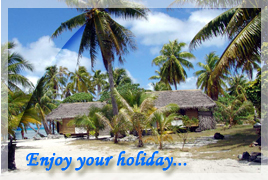

- Rajasthan
- Kerala
- Maharastra
- Tamilnadu



 City : Bhopal
City : Bhopal Location : Central India
Language : Hindi, Urdu, Chhatisgarhi (a local dialect) and English.
When to Visit : October to March
About Bhopal
Bhopal is the capital city of the state of Madhya Pradesh, which is the largest state in India. The city is also referred to as the City of Lakes because of the two beautiful lakes that are situated in the center of the city. Apart from its natural beauty, Bhopal is also famous for its mosques. The Taj-ul-Masjid in Bhopal is the largest mosque of India. Bhopal is also known, sadly, for the largest industrial disaster or the Gas Tragedy, which struck it in 1984.
Bhopal is located in the northwestern part of the state of Madhya Pradesh, in the central region of India. It lies along the slopes of a sandstone ridge, which is a part of the Malwa plateau. There are two man-made lakes at the center of the city. The weather in Bhopal during summers (April-June) is quite hot, but winters (November-February) are cool and pleasant. It experiences southwestern monsoon rains in July-September. It is 744 km south of Delhi and 779 Km northwest of Mumbai (Bombay).
Though Bhopal can be visited throughout the year, it is advisable to avoid the summer season.
Bhopal is located in the northwestern part of the state of Madhya Pradesh, in the central region of India. It lies along the slopes of a sandstone ridge, which is a part of the Malwa plateau. There are two man-made lakes at the center of the city. The weather in Bhopal during summers (April-June) is quite hot, but winters (November-February) are cool and pleasant. It experiences southwestern monsoon rains in July-September. It is 744 km south of Delhi and 779 Km northwest of Mumbai (Bombay).
Though Bhopal can be visited throughout the year, it is advisable to avoid the summer season.
History
Bhopal is said to have been founded by the Parmara King Bhoj (1000–1055), who had his capital at Dhar. The city was originally known as Bhojpal named after Bhoj and the dam ('pal') that he is said to have constructed to form the lakes surrounding Bhopal. The fortunes of Bhopal rose and fell with that of its reigning dynasty. As the Parmaras declined in power, the city was ransacked several times and finally faded away into obscurity.
Geography and climate
Bhopal has an average elevation of 499 metres (1637 feet). Bhopal is located in the central part of India, and is just north of the upper limit of the Vindhya mountain ranges. Located on the Malwa plateau, it is higher than the north Indian plains and the land rises towards the Vindhya Range to the south. The city has uneven elevation and has small hills within its boundaries. The major hills in Bhopal comprise of Idgah hills and Shyamala hills in the northern region and Arera hills in the central region. Bhopal has a sub-tropical climate with hot summers from April to June, the wet monsoon season from July to September and a cool winter from November to February.
Accommodation
Bhopal has a number of hotels and lodges, ranging from luxury class to budget class. So, just pick or choose one of them according to your requirements.
How To Reach
Air
Bhopal is connected by regular Alliance Air flights to Mumbai, Indore, Delhi and Gwalior. Sahara Airlines connect Bhopal with Delhi, Guwahati, Goa, Indore and Lucknow. Airport is 15 km from the city center.
Rail
Bhopal is on one of the two main Delhi to Mumbai railway lines and also on the main line to the southern state capitals of Chennai, Hyderabad, Bangalore and Thiruvananthpuram. There are direct trains to Amritsar and Jammu Tawi and also to major towns in Madhya Pradesh.
Road
There are extensive bus services (private and state) to cities within the region and interstate.
Bhopal is connected by regular Alliance Air flights to Mumbai, Indore, Delhi and Gwalior. Sahara Airlines connect Bhopal with Delhi, Guwahati, Goa, Indore and Lucknow. Airport is 15 km from the city center.
Rail
Bhopal is on one of the two main Delhi to Mumbai railway lines and also on the main line to the southern state capitals of Chennai, Hyderabad, Bangalore and Thiruvananthpuram. There are direct trains to Amritsar and Jammu Tawi and also to major towns in Madhya Pradesh.
Road
There are extensive bus services (private and state) to cities within the region and interstate.







